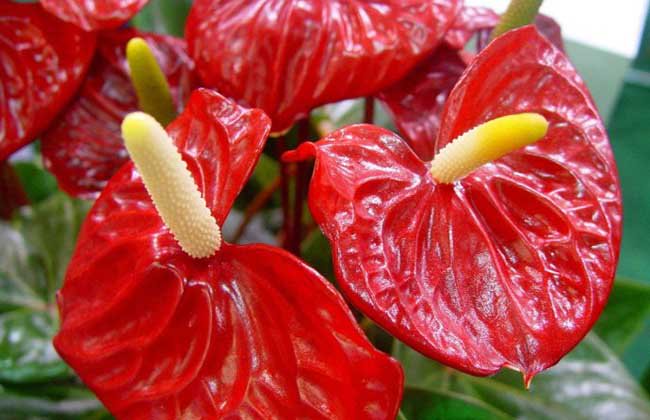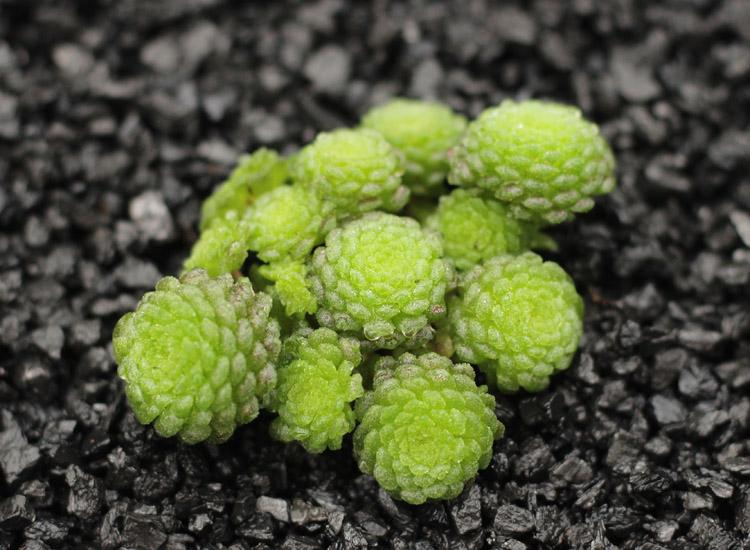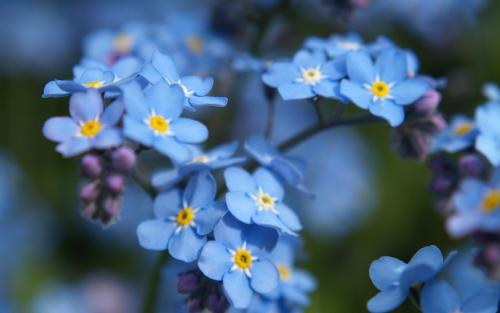Anthurium andraeanum-the most detailed maintenance experience of Anthurium andraeanum
Anthurium generally refers to Anthurium andraeanum Linden (ornamental plant of Araceae) Anthurium andraeanum Linden, perennial evergreen herb of Araceae. Stem nodes short; leaves arising from base, green, leathery, entire, oblong-cordate or ovoid. Petiole slender, spawn flat, leathery and waxy luster, orange or scarlet; fleshy inflorescences yellow, but blossoming all the year round.

Anthurium andraeanum is native to Costa Rica, Colombia and other tropical rain forests. Often attached to trees, sometimes on rocks or directly on the ground. Native to the moist, semi-shady valleys of the tropical rain forests of South America, it is widely cultivated in Europe, Asia and Africa through introduction and improvement and greenhouse cultivation with light, temperature and water regulation systems.
Culture method of Anthurium andraeanum
1. Pot specifications potted Anthurium andraeanum from small seedlings to large seedlings at different growth stages have different specifications for the pot, the small seedling stage is generally completed in the seedling company, and the seedlings we buy are all medium seedlings (about 15cm). Therefore, when planting in the pot, the choice of the pot can be planted in an one-time 160x150 mm red straight-edged plastic pot.
two。 The cultivation substrate must have the properties of strong water and fertilizer conservation, good permeability, no stagnant water, no toxic substances and can fix the plant. Before planting, the substrate must also be thoroughly disinfected to kill diseases and insect pests and maintain its normal growth.
3. Planting Anthurium andraeanum on the pot is a shade-loving plant, and a shading net with 75% shading capacity is needed to prevent excessive light. Double-plant planting is better than single-plant planting. When planting in the pot, it is very important to make the growth point of the heart of the plant expose the horizontal plane of the substrate, and at the same time, the plant should not be contaminated with the substrate as far as possible. When going up the basin, first fill the lower part of the basin with 4-5 cm granular gravel as a drainage layer, then add 2-3 cm of culture soil, and at the same time put the plant in the center of the basin to fully expand the root system, and finally fill the culture soil to 2-3 cm on the basin surface, but the growing point in the center of the plant and the leaflets at the base should be exposed. Bacterial agents must be sprayed in time after planting to prevent the occurrence of Phytophthora and Pythium.
The growth of Anthurium andraeanum needs relatively high temperature and high humidity, so high temperature and humidity are beneficial to the growth of Anthurium andraeanum. Temperature is closely related to humidity. When the temperature is below 20 ℃, the natural environment of the room can be maintained. When the temperature is above 28 ℃, spray system or atomization system must be used to increase the relative humidity of indoor air in order to create a high temperature and humidity growth environment of Anthurium andraeanum. However, in winter, even if the temperature in the greenhouse is higher, it is not suitable to cool and moisturize too much, because the plant leaves are too wet at night but reduce their ability to keep out the cold, making it easy to frostbite, which is not conducive to safe overwintering.
In the high temperature season, the stronger the light is, the higher the indoor temperature is, at this time, the relative humidity of greenhouse air can be increased by sprinkler system or atomization system, but the plant will not be too wet at night to reduce the occurrence of disease; the indoor humidity can also be reduced by turning on ventilation to avoid flower bud abortion or distortion caused by high temperature. In the cold winter, it is necessary to heat up when the indoor day and night temperature is lower than 15 ℃, and when the air temperature is lower than 13 ℃, it is more necessary to use a heater to keep warm to prevent frost injury and make the plant survive the winter safely.
After a period of cultivation and management of Anthurium andraeanum, the matrix will produce biodegradation and salinization, which will reduce the pH value of the matrix and increase the EC value, thus affecting the absorption capacity of plant roots to fertilizer and water. Therefore, the pH value and EC value of the matrix must be determined regularly, and the proportion of nutrient elements should be adjusted according to the measured data in order to promote the absorption of fertilizer and water by the plant. In addition, most Anthurium andraeanum will naturally sprout many small sucking buds in the root to compete for the nutrition of the mother plant, so as to keep the plant young and affect the plant shape. The sucking buds can be removed from the early stage to reduce the damage to the mother plant.
Water required for culture of Anthurium andraeanum
Anthurium andraeanum is a kind of flower species which is sensitive to salt. therefore, the pH value of the substrate should be controlled between 5.2 and 6.1 as far as possible to optimize the growth of Anthurium andraeanum. If the pH value is too small, the flower stem becomes shorter, it will reduce the ornamental value. Tap water is suitable for planting Anthurium andraeanum, but the price is expensive; natural Rain Water is the best water source in Anthurium andraeanum cultivation. Potted Anthurium andraeanum has different water requirements at different growth and development stages. At the seedling stage, due to the weak root system, shallow distribution in the substrate and not tolerant to drought, water should be sprayed 2-3 times a day after planting, always keep the substrate moist, urge it to draw more new roots early, and pay attention to the dry humidity of the pot substrate; plants grow fast in the middle and large seedling stage, and water supply must be sufficient; watering should be reduced and phosphorus and potassium fertilizer should be increased to promote flowering at flowering stage. However, the key to the success of large-scale cultivation of Anthurium andraeanum is to maintain relatively high air humidity.
Especially in the high temperature season, the relative humidity of the air in the greenhouse can be increased by spraying system and atomization system. But we should pay attention not to spray the leaves in the evening, and make sure that there are no water droplets on the leaves of Anthurium andraeanum at night, so as to avoid high-temperature burns on the leaves, resulting in aberration and discoloration of scorched leaves and buds. In the process of watering, dry and wet must be carried out alternately, do not water in the case of serious water shortage, this will affect its normal growth and development. In the high temperature season, it is usually watered every 2-3 days, and the sprinkler system is also used to spray water to the leaves at noon to increase the indoor relative humidity. Watering in the cold season should be carried out between 9 am and 4 pm to avoid frostbite to the roots.
Fertilizer needed for cultivation of Anthurium andraeanum
According to the experience of Dutch cultivation, the effect of root fertilization on Anthurium andraeanum is much better than that of foliar topdressing. Because there is a layer of wax on the leaf surface of Anthurium andraeanum, the fertilizer can not be well absorbed. The principle of regular quantitative application of liquid fertilizer should be grasped. In autumn, 3-4 days is a cycle. If the temperature is high, fertilizer and water can be irrigated once in 2-3 days depending on the dry and wet degree of the substrate in the basin; in summer, fertilizer and water can be irrigated once every 2 days, and once more when the temperature is high; in autumn, fertilizer and water can be irrigated once in 5-7 days.
The time of fertilization varies depending on the climatic environment, usually from 8 a.m. to 17:00, and from 9 a.m. to 16:00 in winter or early spring. Each fertilization must be operated by a special person, and strictly control the dilution concentration and application amount of liquid fertilizer (mother liquor). The pH value of diluted liquid fertilizer was adjusted to about 5.7.When EC value was 1.2ms/cm, it was applied. In addition, after two hours of application of liquid fertilizer, spray water on the leaves of the plants with a sprinkler system to wash the fertilizer left on the leaves to keep the leaves clean and avoid algae breeding.
Light needed for cultivation of Anthurium andraeanum
Anthurium andraeanum grows according to the cycle of "leaf → flower → leaf → flower". Inflorescences are formed in the axils of each leaf. This leads to the same yield of flowers and leaves, and the most important factor in the difference in yield is light. If the light is too little, the assimilates produced by the plant under the influence of photosynthesis are also very little; when the light is too strong, part of the leaves of the plant will become warm, which may cause discoloration, burns or scorching of the leaves. Therefore, the success of light management directly affects the number of assimilates produced by Anthurium andraeanum and the product quality in the later stage. In order to prevent bud discoloration or burns, there must be shade protection.
The illumination of Anthurium andraeanum in greenhouse can be regulated by movable shading net. Cover 75% of the light in sunny days, the ideal light in the greenhouse is about 20000Lux, the maximum light intensity should not exceed 25000Lux for a long time, and there is no need to block the light in the morning, evening or rainy days. However, the light requirements of Anthurium andraeanum are different in different growth stages. If the vegetative growth stage (usually picking buds) requires higher light, it can appropriately increase the light to promote its growth; during flowering, the light requirement is low, and the movable shading net can be adjusted to 10000Lux to 15000Lux to prevent the bud from discoloration and affect the ornamental.
Time: 2019-04-22 Click:
- Prev

The breeding methods of longevity flowers mean good-good reproduction!
Christmas cabbage (scientific name: KalanchoeblossfeldianaPoelln.): also known as "longevity flower". Perennial fleshy herbs. The plant height is 10-30 cm. The stem is erect. Leaves simple opposite, elliptic, margin obtusely dentate. Cymes; florets orange to crimson.
- Next

Give to the ex-plant a "forget-me-not" send her forget-me-not flower profile conservation
Forget-me-not (scientific name: Myosotissylvatica) is a plant belonging to the genus Forget-me-not of the Arneaceae family. Forget-me-not is a perennial herb, 30-60cm tall. Cymes in whorls, 10-15cm long; forget me with light blue flowers, flowering in April-May
Related
- Fuxing push coffee new agricultural production and marketing class: lack of small-scale processing plants
- Jujube rice field leisure farm deep ploughing Yilan for five years to create a space for organic food and play
- Nongyu Farm-A trial of organic papaya for brave women with advanced technology
- Four points for attention in the prevention and control of diseases and insect pests of edible fungi
- How to add nutrient solution to Edible Fungi
- Is there any good way to control edible fungus mites?
- Open Inoculation Technology of Edible Fungi
- Is there any clever way to use fertilizer for edible fungus in winter?
- What agents are used to kill the pathogens of edible fungi in the mushroom shed?
- Rapid drying of Edible Fungi

